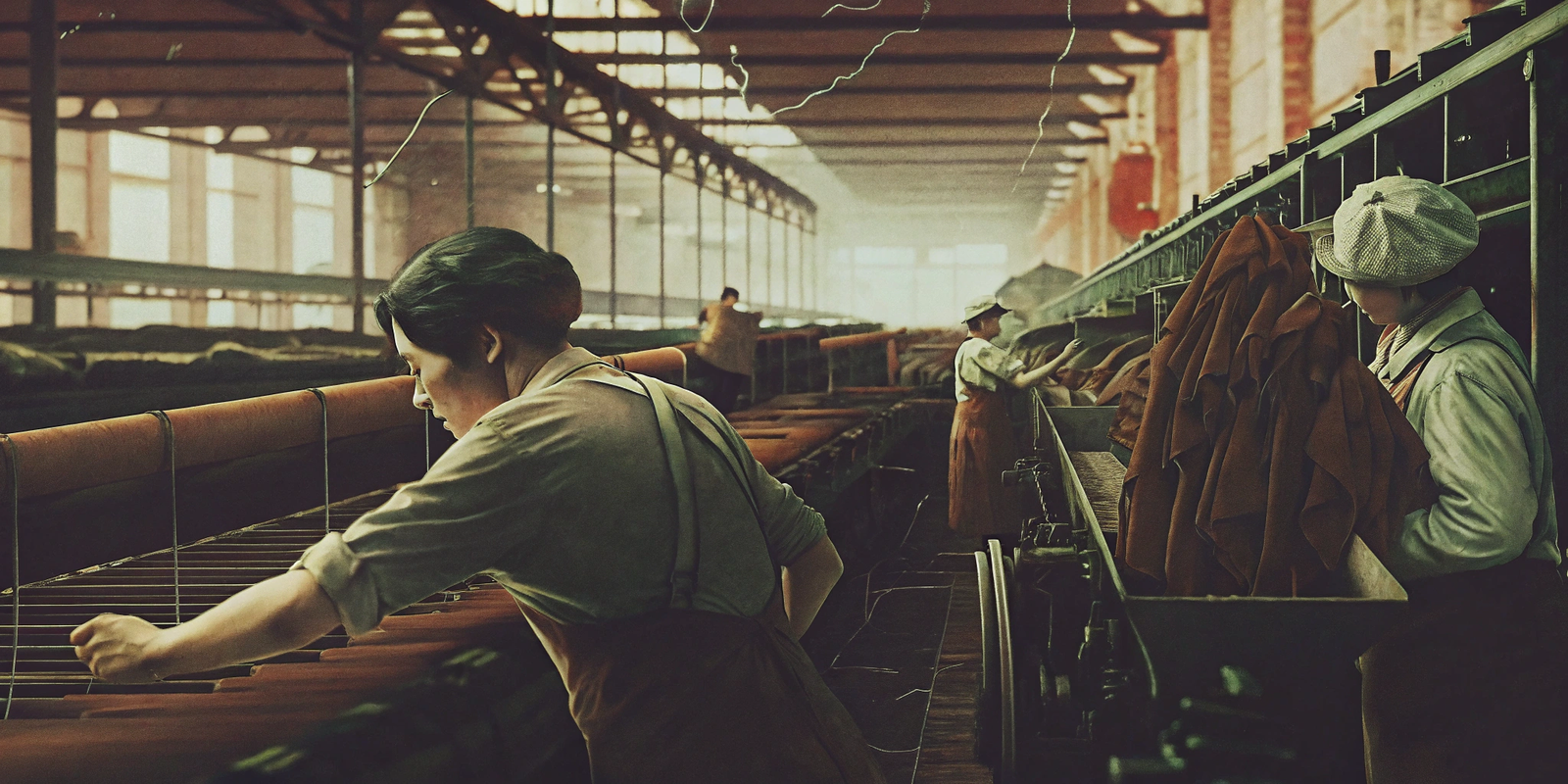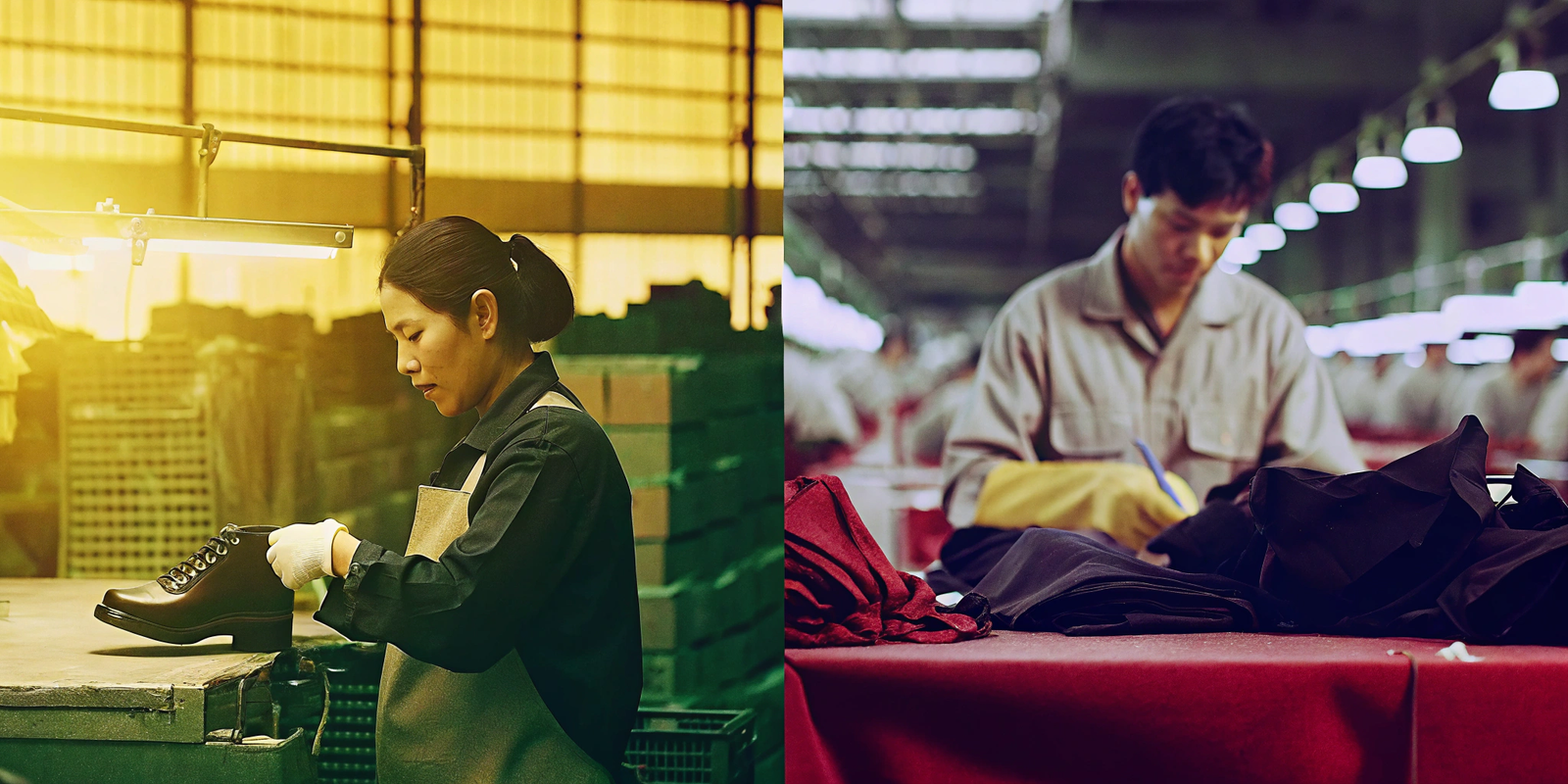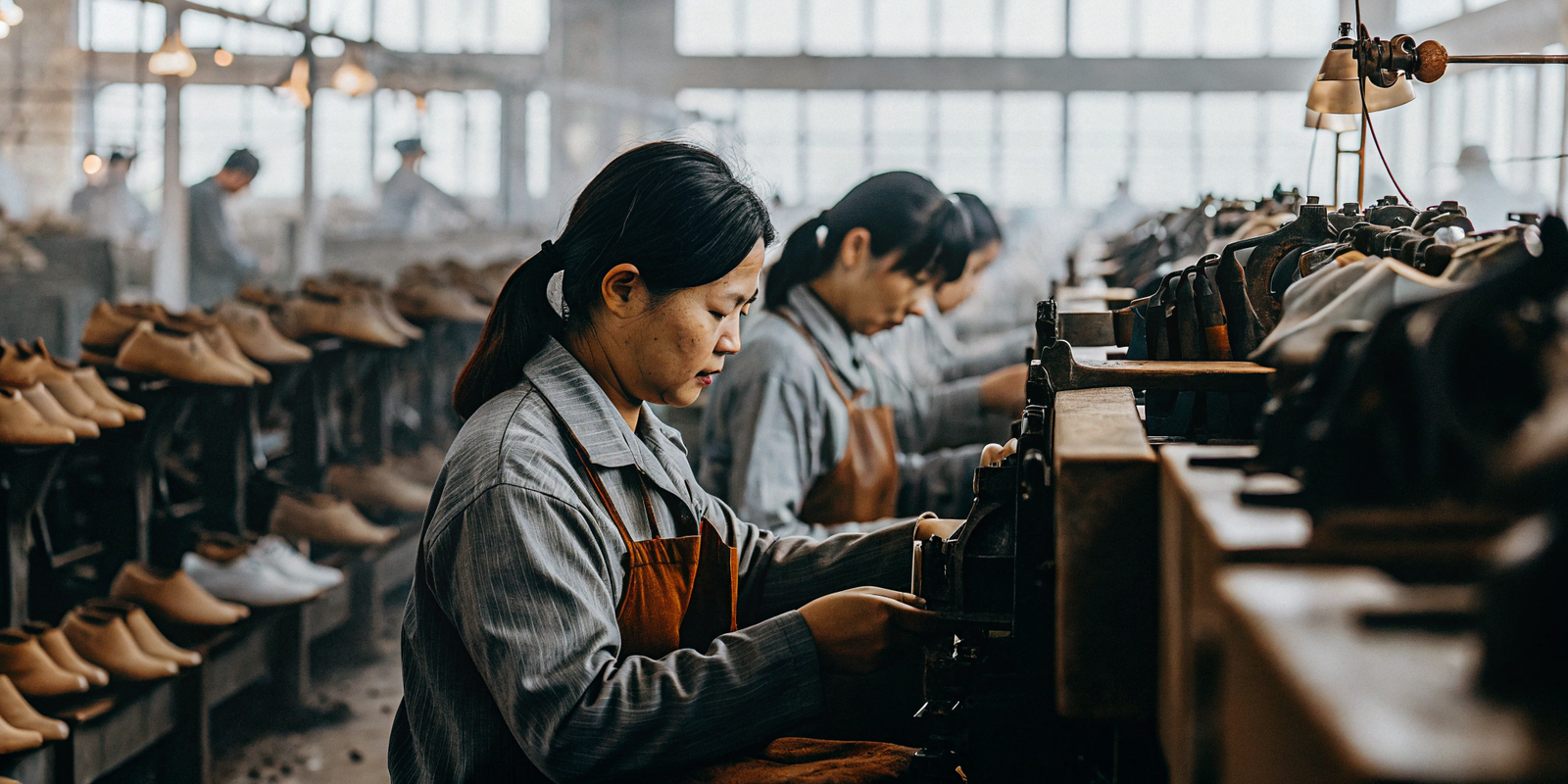Problem: You might think that with rising labor costs and increasing global competition, China's reign as the world's shoe manufacturing powerhouse would be waning. Agitation: It's natural to question whether the "Made in China" label on your favorite footwear still holds the same prevalence and significance as it once did. Solution: But despite shifts in the global landscape, China continues to be an undisputed leader in shoe manufacturing, sustained by a complex web of factors that are hard for other nations to replicate.
China still dominates global shoe manufacturing due to its unparalleled mature supply chain, vast skilled labor force, advanced production infrastructure, and decades of accumulated expertise in complex footwear production. These factors enable China to offer unmatched efficiency, quality, scalability, and competitive pricing for a diverse range of footwear, making it the preferred choice for both mass-market and many high-end brands.

In my 25 years in this industry, based in China, I've seen firsthand how our country has built its footwear manufacturing strength. At Lucas, we benefit from this robust ecosystem every single day. Others talk about it; we live it.
Why Does China Lead the World in Shoe Manufacturing? Problem: When you look at the tags on countless pairs of shoes, "Made in China" appears so frequently that it almost feels inevitable, yet the reasons behind this global dominance might not be immediately clear. Agitation: You might wonder what specific advantages China possesses that allow it to consistently outproduce and outmaneuver other nations in the highly competitive footwear industry. Solution: Let's break down the core strengths that underpin China's enduring leadership in shoe manufacturing, revealing the intricate infrastructure and deep expertise that few, if any, other countries can match.
China leads the world in shoe manufacturing because of its highly developed and comprehensive supply chain, which includes everything from raw material suppliers to specialized component factories. This is coupled with a massive, skilled, and adaptable workforce, advanced automated production lines, and significant government support for industrial development. These combined factors create an ecosystem that offers unparalleled efficiency, flexibility, quality consistency, and scale, making it the most cost-effective and reliable option for footwear production globally.
From my perspective at Lucas, it's not just one thing; it's everything working together. Finding a factory that can handle complex designs, secure specific materials quickly, and scale production seamlessly—that's China's strength. We've built our business on being part of that strength.
What are China's core advantages in shoe manufacturing?
- Comprehensive Supply Chain Ecosystem:
- China has spent decades building a complete industrial chain. This chain includes everything needed for shoes. From synthetic leathers, textiles, and rubber to specialized components like eyelets, laces, and soles, all are made domestically.
- This means factories can source almost any material or component locally, quickly. This reduces lead times. It also lowers logistics costs. It allows for quick adjustments to designs or materials. This level of vertical integration is unmatched globally.
- Vast and Skilled Labor Force:
- Despite rising wages, China still possesses an enormous workforce. Many workers have decades of experience in footwear production. This includes complex assembly, stitching, and finishing.
- The labor force is also highly adaptable. They quickly learn new techniques. They adopt new technologies. This allows for both mass production and specialized craftsmanship.
- Advanced Infrastructure and Logistics:
- China has invested heavily in modern infrastructure. They have world-class ports, extensive high-speed rail networks, and efficient road systems.
- This ensures raw materials can reach factories quickly. Finished products can be shipped anywhere in the world efficiently. This logistical superiority is a critical advantage.
- Technological Advancement and Automation:
- Chinese factories have embraced automation. They use robotics for repetitive tasks. They use advanced machinery for precision cutting and stitching.
- This technology improves efficiency. It ensures consistent quality. It offsets some of the rising labor costs. They are also adept at rapid prototyping and tooling.
- Accumulated Expertise and Knowledge Transfer:
- Decades of manufacturing for global brands have built immense intellectual capital. Chinese engineers, technicians, and factory managers understand the complexities of shoe production deeply.
- This institutional knowledge allows for problem-solving. It enables continuous improvement. It facilitates efficient scaling of production.
- Scalability and Flexibility:
- Factories in China can handle orders of almost any size. They can scale production from small batches to millions of pairs.
- They are also highly flexible. They can quickly switch between different styles, materials, and production techniques. This adaptability is vital in the fast-changing fashion industry.
- Competitive Cost Structure:
- While labor costs have risen, the overall cost structure remains competitive. This is due to the efficient supply chain, economies of scale, and advanced infrastructure.
- For many types of shoes, the total cost of production in China (including materials, labor, overhead, and logistics) is still lower than or comparable to other major manufacturing hubs.
These factors make China an incredibly attractive destination for shoe manufacturing. Other countries may offer lower labor costs, but they often lack the integrated supply chain, skilled workforce, and logistical support that China provides.
Are Major Brands Still Making Shoes in China? Problem: With ongoing global economic shifts and discussions around supply chain diversification, you might hear whispers that major shoe brands are abandoning China for other manufacturing locations. Agitation: This can leave you wondering if the "Made in China" label is becoming a thing of the past for big-name footwear. Solution: Let's address this directly. While some brands are indeed diversifying, many major players continue to rely heavily on China for a significant portion, if not the majority, of their shoe production.
Yes, major brands are still making shoes in China, often in significant volumes. While some have diversified their supply chains to countries like Vietnam, Indonesia, or India due to labor cost changes or geopolitical considerations, China remains indispensable for its vast production capacity, advanced technological capabilities, unparalleled supply chain integration, and deep expertise in complex footwear manufacturing. For many brands, moving entire production lines out of China is simply not feasible or economically rational due to its unique advantages.
 At Lucas, we work with brands of all sizes, and I can tell you that the demand for China-based production remains strong. The value proposition is just too high to ignore for many companies. It’s about more than just labor cost; it’s about competence and capability.
At Lucas, we work with brands of all sizes, and I can tell you that the demand for China-based production remains strong. The value proposition is just too high to ignore for many companies. It’s about more than just labor cost; it’s about competence and capability.
Why do major brands still rely on China?
- Unmatched Scale and Complexity:
- For brands needing millions of pairs of shoes, China's production capacity is unrivaled. No other country can ramp up and sustain production at the same scale and speed.
- Many modern athletic and complex fashion shoes have intricate designs. They use multiple materials and advanced manufacturing techniques. Chinese factories excel at this complexity. They have the skilled labor and specialized machinery.
- Sophisticated Supply Chain:
- Major brands often have highly specific material requirements. They need specialized components. China's dense network of supporting factories can meet these needs.
- Moving production to a new country often means rebuilding this entire supplier network. This is a massive, time-consuming, and risky undertaking.
- Quality Control and Consistency:
- Decades of experience working with top global brands means Chinese factories have high-quality control standards. They are familiar with rigorous international guidelines.
- Maintaining consistent quality across millions of units is a challenge. China has proven its ability to do this reliably.
- Proximity to Innovation:
- China is not just a place for manufacturing. It is also a hub for material innovation and manufacturing technology. Many R&D centers are located there.
- Brands want to be close to these developments. This allows them to quickly integrate new materials and processes into their products.
- Risk Diversification vs. Full Relocation:
- Some brands are indeed "de-risking" their supply chains. They are adding production in countries like Vietnam, Indonesia, or even Mexico.
- However, this is typically about diversifying, not fully relocating. China usually remains a significant part of their production portfolio. This ensures resilience against regional disruptions. It allows them to leverage the best of different regions.
- Lead Times and Flexibility:
- In the fast-paced fashion industry, quick turnaround times are crucial. China's efficient processes and integrated supply chain minimize lead times.
- The ability to quickly respond to demand fluctuations or design changes is an invaluable asset for major brands.
So, while brands might talk about "China Plus One" strategies (adding one more manufacturing location outside China), the "Plus One" rarely replaces China entirely. It adds capacity, but China remains a powerhouse for a reason.
How Many Shoes Are Made in China Each Year? Problem: Given China's long-standing dominance in footwear manufacturing, you might have a sense that the numbers are large, but pinpointing the sheer volume of shoes produced there annually can be elusive. Agitation: It's hard to grasp the true scale of China's production without concrete figures, leaving you to wonder just how many pairs of shoes roll off their assembly lines each year. Solution: Let's put some solid numbers to this question, revealing the staggering volume of footwear that China contributes to the global market each year, cementing its position as the undisputed leader.
China consistently manufactures a colossal volume of shoes annually, typically producing more than half of the world's total footwear. While exact figures fluctuate year to year due to global demand and economic conditions, China's output generally ranges between 10 billion and 14 billion pairs of shoes per year. This incredible volume underscores its unrivaled capacity and integral role in supplying the global footwear market, far exceeding the production of any other single country.

Working within this industry, I'm always amazed by the sheer scale. When we at Lucas talk about capacity, we're talking about contributing to those billions of pairs. It’s a testament to the industry’s efficiency and resilience here.
The sheer scale of China's footwear production:
- Global Market Share:
- For many years, China has accounted for well over 50% of global footwear production. Some estimates even put it closer to 60-70% in peak years.
- This means that for every two or three pairs of shoes made worldwide, at least one comes from China.
- Annual Production Volume:
- While specific statistics can vary slightly depending on the reporting agency (e.g., China Leather Industry Association, ITC, various market research firms), robust estimates consistently place China's annual footwear production in the multi-billion range.
- In recent years (e.g., 2020-2023), despite global disruptions, China's output has hovered between 10 billion and 14 billion pairs of shoes annually. This includes all types of footwear: athletic shoes, dress shoes, sandals, boots, and slippers.
- Comparison to Other Countries:
- To put this into perspective, the next largest producers (like Vietnam, Indonesia, India) typically produce hundreds of millions to a few billion pairs each. China's output is often multiple times higher than all other major producers combined.
- Factors Enabling This Volume:
- The sheer number of footwear factories operating in China.
- The highly mechanized and automated production lines in many of these factories.
- The established and efficient supply chain that ensures a steady flow of materials.
- The extensive and skilled workforce capable of handling large-scale production.
- Beyond Volume: Value:
- It's not just about the number of pairs. China also produces a significant portion of high-value, technologically advanced footwear. This includes performance athletic shoes and intricate fashion designs.
- This mix of mass-market and high-end production further cements its dominant position.
The numbers clearly show that China's role in global shoe manufacturing is not just significant, it's foundational. Despite various global trends, its immense production capacity and intricate industrial ecosystem remain unmatched.
China still dominates global shoe manufacturing due to its unparalleled supply chain, vast skilled workforce, advanced infrastructure, and decades of expertise. Major brands continue to rely heavily on China for its efficiency and scale, producing an astounding 10-14 billion pairs of shoes annually, cementing its indispensable role in the global footwear industry.
